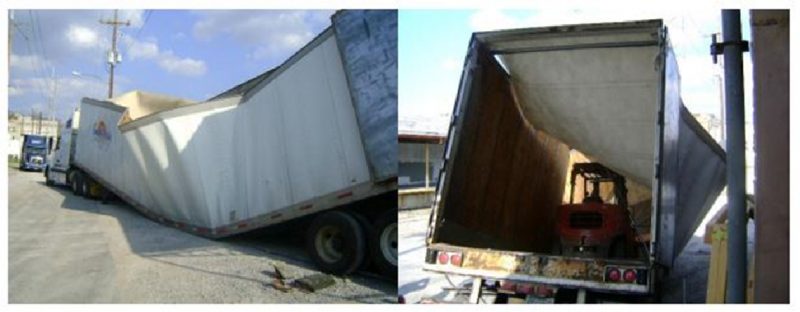Trailers: Critical Factor in Pallet Logistics
Brian Isard
Trailers are an indispensable tool in our industry, a critical part of your supply chain process which has important considerations for your customers that use this equipment.
I have found over the years that whether you operate your own straight trucks and tractor trailers or use outside carriers it pays to have a good equipment inspection program in place on both the outbound and inbound trailers handled by your facility.
If you are using an outside carrier then reviewing the carrier’s vehicle and trailer inspection and maintenance records as part of the annual contract renewal is a good idea. If you operate your own fleet then you need to follow the regulations as they pertain to vehicle inspections and are being upgraded.
Commercial vehicle operators with a gross weight of more than 4,500 kilograms should be aware that the Ontario Ministry of Transport has amended their regulations recently to bring their regulations in line with the updated National Safety Code Standard for annual inspections. Many other provinces have or are considering the same improvements. http://ontruck.org/reminder-mto-moves-forward-with-intro-of-new-annual-safety-inspection-standards/
Over the years I have had plenty of arguments with forklift drivers and supervisors who claim that conducting a pre-start trailer inspection cuts down on forklift productivity. In my view a proper pre-start trailer inspection program coupled with a “Red Tag” program is instrumental to both your quality management and safety management programs, not to mention your regulatory compliance efforts if you are running your own equipment.
There are two types of trailers used in our industry: sheet and post trailers and composite or plate trailers. Sheet and post trailers are built with plywood or a similar material. Approximately one-inch-deep posts separate each section, and logistic slots can be installed to hold the cargo in place during transport, which is especially convenient with LTL shipping. Measuring 98.5 inches wide inside the trailer, the sheet and post trailer is usually lighter so you can get more weight on the trailer but requires more consistent repair in comparison to composite trailers.
Composite or plate trailers with smooth interior walls are designed to reduce the chances of snagging or damaging the freight on the insides of the trailer during loading and unloading. They are the “workhorses” in the wood packaging industry . The insides of the trailers measure 102 inches wide, 2.5 inches wider than sheet and post trailers. The smooth walls are much used by forklift drivers to snug up stacks of pallets or containers when trying to cube out trailers properly.
Someone who runs a fleet of 30 trailers that does extensive work in sweeping the docks of a major retailer told me of how happy he was to have acquired a number of used 53” -102” plate trailers with reinforced bulkheads and sidewalls out of the automotive industry which proved ideal for handling the mixture of pallets that he has to process every day.
From a safety perspective, forklift drivers must ensure that trailers are safe to access and that any risk of the trailer failure is eliminated. For that reason I insisted that forklift drivers complete a Load Sheet that identified the following safety checklist:
Make sure that if a forklift driver identifies deficiencies that he or she feels comfortable refusing to work on that trailer. His or her supervisor should then “red tag “ that trailer and identify it by trailer number to make sure that trailer doesn’t re-enter your facility again until it has been properly repaired. These procedures are critical if you want to eliminate accidents caused by poorly maintained semi-trailers such as the one you see in the photos below.

From a quality perspective, it is no use putting new or repaired product into trailers that could potentially contaminate your load of new or repaired product. Trailers can handle all kinds of product and the previous shipment may have left residue on the trailer floor that can taint your load with a smell or foreign objects such as glass or rodent droppings.
Remind your forklift drivers that you are responsible for both inspecting the trailer condition every time they drive on to it just as much as they are responsible for the way the trailer is loaded.